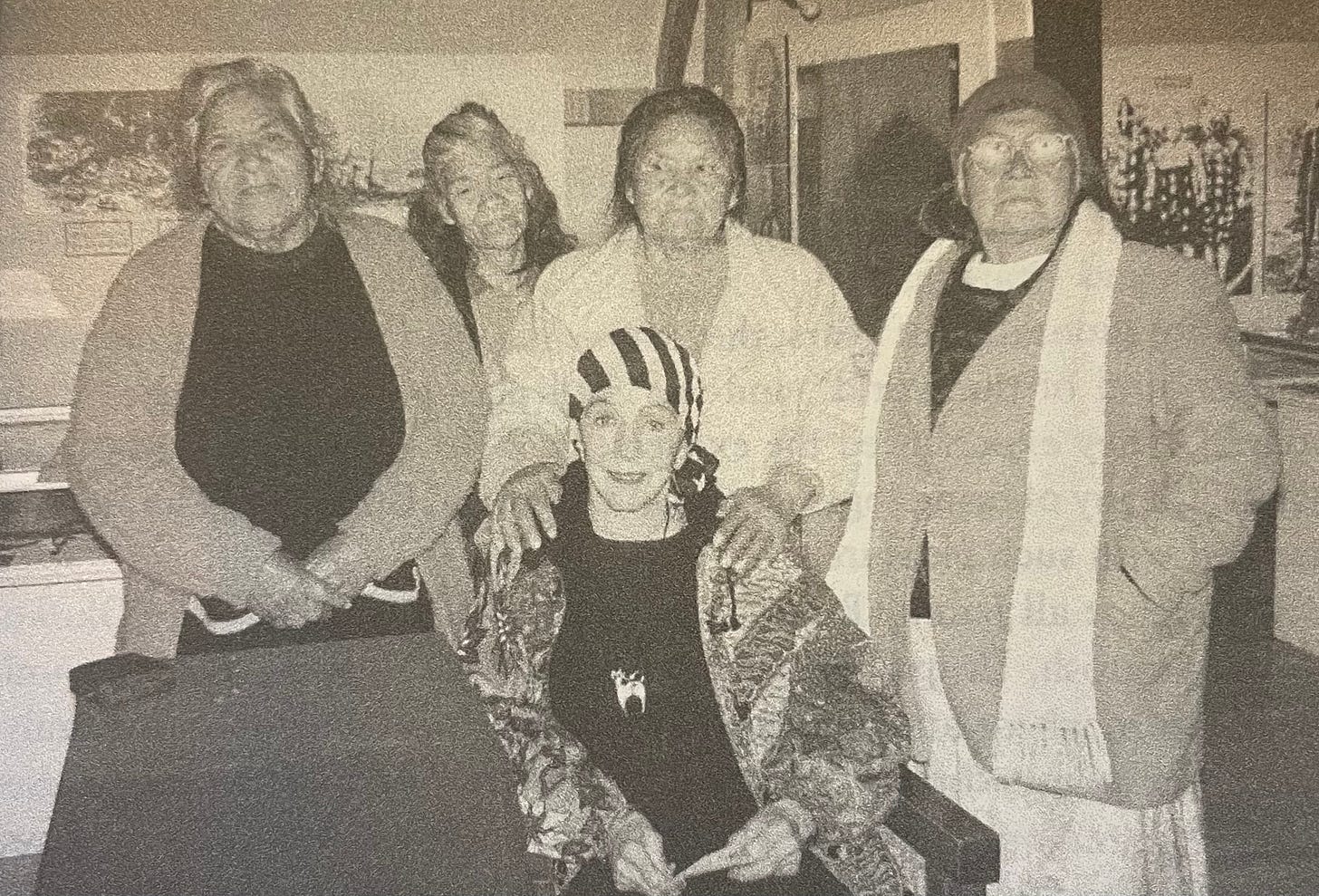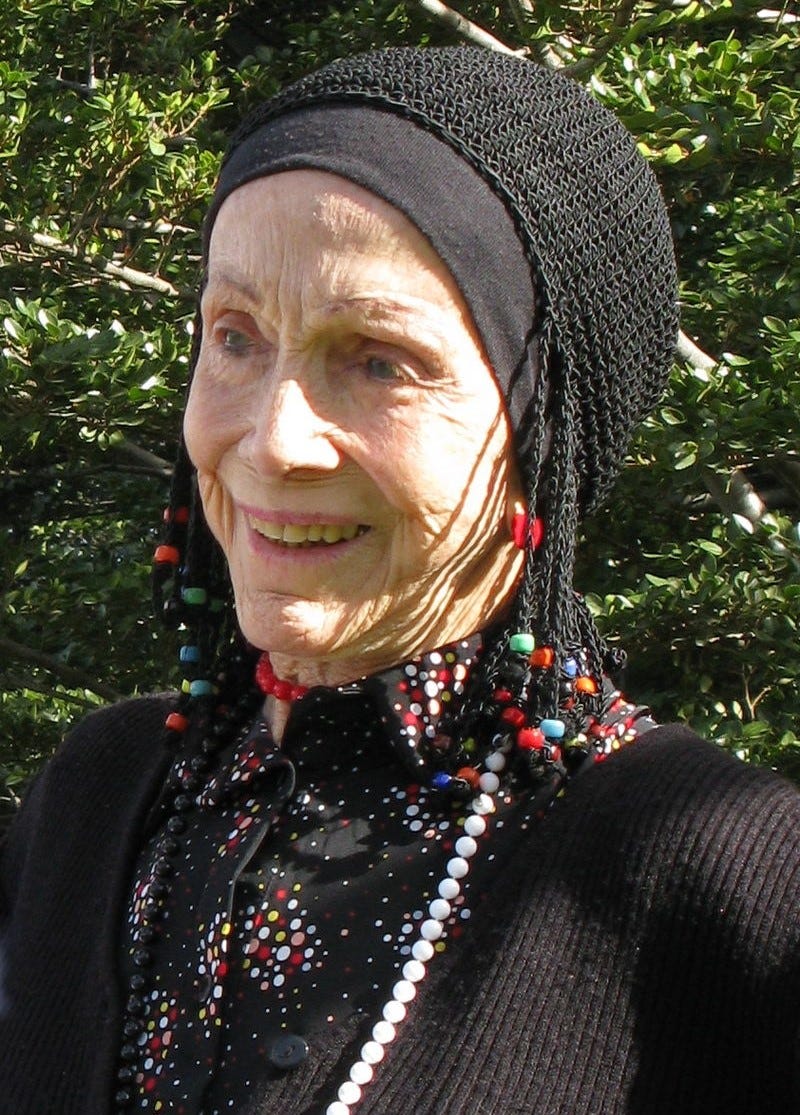Anne Chapman
A profile of a courageous and compassionate Franco-American anthropologist and artist
“The Yamana are among the most defiled people of the world,” wrote Anne Chapman. In contrast, her goal was to “treat them as fellow human beings, on a par with the well-known personages who encountered them.”
It is this human approach, warm and empathetic, that led me to admire her as a person amidst her scholarly work. As an ethnologist, she was impressive and influential for her fieldwork among the Tolupan and Lenca people of Honduras and the Selk’nam and Yahgan people of Tierra del Fuego. Her writings, presentations, documentaries, and recordings have done much to educate outsiders about these people groups and to preserve records of them for posterity. Her films, poems, and way of life also evidence the value she placed on the relationships she formed among those people groups.
Other than Lucas Bridges’ book that first inspired me to write this novel, her book European Encounters with the Yamana People of Cape Horn, Before and After Darwin has been one of the most helpful resources I’ve found for learning about the Yahgan. I was daunted by it at first—it’s a serious-looking tome of over 700-plus pages—but I’m continually impressed by how she was able to turn boatloads of research on the history of the Yahgan into a fairly easy-to-read narrative of 400 years of history. Even though the book includes a 20-page bibliography, she was able to craft a narrative around individual profiles of people, which she uses as illustrative examples of the lives of the Yaghan, and she alludes to Shakespeare and Melville as she does so.
She says in the introduction, “Thanks to the quality of the historical documents and to the years I spent concentrating on this text, their personalities have become so vivid that they have become my friends—some, my heroes.”

Anne MacKaye Chapman was born in Los Angeles, California, in 1922. I wasn’t able to find much information about her family or her childhood—she never wrote publicly about it—but she had an older brother and sister, and her parents died in the Chicago area: her mother when Anne was twelve and her father when she was sixteen.
In 1944, Anne traveled to Mexico City to study at the Escuela Nacional de Antropología e Historia (National School of Anthropology and History), where she studied under notable professors like the German Paul Kirchhoff. As a student, she conducted fieldwork in the Chiapas region of Mexico—and, while she was at it, did some community-organizing activism on behalf of the rural communities she visited, to the dismay of her boss. She earned her master’s degree in 1951.
She next headed to Columbia University, in New York, to work on a Ph.D. in Anthropology. As a Fulbright scholar, she traveled to Honduras to do fieldwork among the Tolupan, studying their oral tradition and social organization from 1955-1960. She published her research as a book first in French and then in English, and she continued visiting the community until the last years of her life.

In the 1960s, Anne Chapman began fieldwork among the Lenca people of Honduras, eventually publishing two books in Spanish about their rituals and traditions.
By this point, she was based in France as a member of the French Centre national de la recherche scientifique (French National Centre for Scientific Research), where she worked with Claude Lévi-Strauss. She was also associated with the Research Institute for the Study of Man in New York City, the Musée de l'Homme in Paris, the Instituto Hondureño de Antropología in Tegucigalpa, and the Instituto Nacional de Antropología in Buenos Aires. She retired in 1987, but she continued her travels, her research, and her publications until her death in 2010, at the age of 88.
It’s worth pointing out that women anthropologists and ethnographers were rare when she began her career, but she didn’t let that stop her. One eulogy written by a younger woman ethnographer spoke admiringly of Anne’s determination and perseverance in the face of opposition and difficulties she encountered as a woman, though the article didn’t cite specifics.
In 1964, Anne Chapman joined a French archaeological expedition to Tierra del Fuego. That was how she met Lola Kiepja and Ángela Loij, two of the last members of the Selk’nam people group who remembered the traditions of their people. Chapman’s recordings of Lola Kiepja’s chants in Selk’nam are particularly valued, as Lola Kiepja passed away in 1966. Anne Chapman eventually published three different books and numerous articles about the Selk’nam, including her most influential book, Drama and Power in a Hunting Society (1981).
From 1985 into the 1990s, she worked with four Yahgan women who still spoke the language and were some of the last to experience traditional parts of Yahgan culture like the initiation ceremony (the chexaus). Her film about the Yahgan, titled Homage to the Yahgan: The Last Indians of Tierra del Fuego and Cape Horn (1990), was a finalist in the International Film and TV Festival of New York. (You can watch a preview of the film here.)

Her book European Encounters with the Yamana People of Cape Horn, Before and After Darwin, which I referenced incessantly for several of my previous Substack articles, was her final book, which she worked on from 1991 until 2009. It was published by Cambridge University Press in 2010, the year of her death.
She described her project in this way:
My intention is to fill a void—to situate the Yamana and other Fuegians in universal history as relevant actors during these past four centuries, to bring them into the fold of written history from that outer rim of human experiences, from that separate category of savages, primitives, marginal survivors or exotic curiosities. This book opens another door to the past by joining the experiences of the insiders and outsiders, of the Fuegians and Europeans in a single narrative.
Aside from the impressive array of research she synthesized in the book, Anne Chapman’s personal touch—her dry humor, her empathy, her personal acquaintance and friendship with members of the people group she was writing about—makes the book stand out.
As a researcher, I am grateful for her insightful and comprehensive summary of other sources. As a fiction writer, I find her life fascinating and inspiring. I wish I’d been able to find out more about her.

I’ll end with some of her own words, from the introduction to European Encounters:
Each of us has only one life, but we can experience the lives of others, without stretching our imagination, through our knowledge and sensitivity.
Sources:
Anne Chapman, European Encounters with the Yamana People of Cape Horn, Before and After Darwin (Cambridge: Cambridge University Press, 2010)
Anne MacKaye Chapman, “A Genealogy of My Professors and Informants,” Research Institute for the Study of Man, https://www.thereedfoundation.org/rism/chapman/index.htm, accessed April 19, 2024
Anne MacKaye Chapman, “Poem: A Lament for the Indians of Tierra del Fuego,” Research Institute for the Study of Man, https://www.thereedfoundation.org/rism/chapman/index.htm, accessed April 19, 2024
“Anne Chapman,” Wikipedia, https://en.wikipedia.org/wiki/Anne_Chapman, accessed 19 April 2024.
“Dr. Anne MacKaye Chapman,” Find a Grave, https://www.findagrave.com/memorial/53671666/anne-mackaye-chapman, accessed April 19, 2024.
María Alicia Baca Macazana, “La vida de una etnóloga: Anne Chapman,” Tutaykiri: Revista Internacional del Colegio Profesional de Antropólogos de Lima, sede: New York, published 27 June 2010, https://tutaykiri.blogspot.com/2010/06/anne-chapman.html, accessed 19 April 2024.




